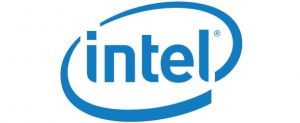
Quantum News Briefs March 7: A call for Europe to increase support for quantum software development; IQM Quantum Computers to deliver quantum processing units for first Spanish quantum computer; NASA’s quantum detector achieves world-leading milestone + MORE.
Opinion: Europe must increase support for quantum software development
IQM Quantum Computers to deliver quantum processing units for first Spanish quantum computer
 IQM Quantum Computers (IQM) announced on March 6 it has been selected to deliver quantum processing units for the first Spanish quantum computer to be installed at the Barcelona Supercomputing Center (BSC) and integrated into the MareNostrum 5 supercomputer, the most powerful in Spain.
IQM Quantum Computers (IQM) announced on March 6 it has been selected to deliver quantum processing units for the first Spanish quantum computer to be installed at the Barcelona Supercomputing Center (BSC) and integrated into the MareNostrum 5 supercomputer, the most powerful in Spain.
IQM is a member of the consortium led by Spanish companies Qilimanjaro Quantum Tech and GMV that was selected by Quantum Spain, an initiative promoted by the Ministry of Economic Affairs and Digital Transformation through the Secretary of State for Digitalisation and Artificial Intelligence (SEDIA) in December 2022, to build the first quantum computer for public use in Southern Europe.
Dr. Jan Goetz, CEO and Co-founder of IQM Quantum Computers, said, “This is a significant announcement for IQM. We have the right background and experience in developing quantum processors, computers, and national quantum ecosystems. We are looking forward to working with Qilimanjaro Quantum Tech and are delighted to be part of such a strong consortium and play an important role by providing quantum processing units for this notable project.”
The integration of the quantum computer into MareNostrum 5 will have the potential to significantly increase the impact of research and innovation by enabling solutions that complement the capabilities of existing supercomputers, which will be available to the research community, companies, and public organisations, and by strengthening technological and industrial development in Spain and the creation of highly qualified jobs. Click here to read the complete news announcement.
NASA’s quantum detector achieves world-leading milestone
 A device has been developed by scientists at NASA’s Jet Propulsion Laboratory and Caltech that can count huge numbers of single photons – quantum particles of light – with incredible precision. Like measuring individual droplets of water while being sprayed by a firehose, the Performance-Enhanced Array for Counting Optical Quanta (PEACOQ) detector is able to measure the precise time each photon hits it, within 100 trillionths of a second, at a rate of 1.5 billion photons per second. No other detector has achieved that rate. Quantum News Briefs summarizes the announcement from NASA.
A device has been developed by scientists at NASA’s Jet Propulsion Laboratory and Caltech that can count huge numbers of single photons – quantum particles of light – with incredible precision. Like measuring individual droplets of water while being sprayed by a firehose, the Performance-Enhanced Array for Counting Optical Quanta (PEACOQ) detector is able to measure the precise time each photon hits it, within 100 trillionths of a second, at a rate of 1.5 billion photons per second. No other detector has achieved that rate. Quantum News Briefs summarizes the announcement from NASA.
“Transmitting quantum information over long distances has, so far, been very limited,” said PEACOQ project team member Ioana Craiciu, a postdoctoral scholar at JPL and the lead author of a study describing these results. “A new detector technology like the PEACOQ that can measure single photons with a precision of a fraction of a nanosecond enables sending quantum information at higher rates, farther.”
The detector itself is tiny. Measuring only 13 microns across, it is composed of 32 niobium nitride superconducting nanowires on a silicon chip with connectors that fan out like the plumage of the detector’s namesake. Each nanowire is 10,000 times thinner than a human hair.
Funded by NASA’s Space Communications and Navigation (SCaN) program within the agency’s Space Operations Mission Directorate and built by JPL’s Microdevices Laboratory, the PEACOQ detector must be kept at a cryogenic temperature just one degree above absolute zero, or minus 458 degrees Fahrenheit (minus 272 degrees Celsius). This keeps the nanowires in a superconducting state, which is required for them to be able to turn absorbed photons into electrical pulses that deliver the quantum data.
Although the detector needs to be sensitive enough for single photons, it is also designed to withstand being hit by many photons at once. When one nanowire in the detector is hit by a photon, it is momentarily unable to detect another photon – a period called “dead time” – but each superconducting nanowire is designed to have as little dead time as possible. Moreover, PEACOQ is equipped with 32 nanowires so that others can pick up the slack while one is “dead.”
“In the near term, PEACOQ will be used in lab experiments to demonstrate quantum communications at higher rates or over greater distances,” said Craiciu. “In the long term, it could provide an answer to the question of how we transmit quantum data around the world.” Click here to read the NASA.gov article in-entirety.
Intel releases software platform for quantum computing developers
 Intel Corp recently released a software platform for developers to build quantum algorithms that can eventually run on a quantum computer that the chip giant is trying to build. Quantum News Briefs summarizes.
Intel Corp recently released a software platform for developers to build quantum algorithms that can eventually run on a quantum computer that the chip giant is trying to build. Quantum News Briefs summarizes.
The platform, called Intel Quantum SDK, would for now allow those algorithms to run on a simulated quantum computing system, said Anne Matsuura, Intel Labs’ head of quantum applications and architecture.
Matsuura said developers can use the long-established programming language C++ to build quantum algorithms, making it more accessible for people without quantum computing expertise.
“The Intel Quantum SDK helps programmers get ready for future large-scale commercial quantum computers,” Matsuura said in a statement. “It will also advance the industry by creating a community of developers that will accelerate the development of applications.”
The number of companies pursuing quantum computer hardware is mushrooming, from big corporations such as IBM Corp and Alphabet Inc’s Google to startups, yet so far none have made a machine that makes a significant dent in the field. Using quantum computing simulators, such as the one Intel has built, is therefore important to train developers and work on algorithms in the meantime, Intel said.
Intel so far does not have a quantum computer available for customers to use, but James Clarke, who in charge of quantum hardware at Intel, said the company was working on building one based on its silicon chip-making technology.
“What we’re doing at Intel is we’re making transistors very close to each other, operating them at low temperature and with single electrons and having these act as qubits,” Clarke explained to Reuters. Click here to read Reuters article in-entirety.
Sandra K. Helsel, Ph.D. has been researching and reporting on frontier technologies since 1990. She has her Ph.D. from the University of Arizona.
- SEO Powered Content & PR Distribution. Get Amplified Today.
- Platoblockchain. Web3 Metaverse Intelligence. Knowledge Amplified. Access Here.
- Source: https://www.insidequantumtechnology.com/news-archive/quantum-news-briefs-march-7-a-call-for-europe-to-increase-support-for-quantum-software-development-iqm-quantum-computers-to-deliver-quantum-processing-units-for-first-spanish-quantum-computer-nasa/


 Andris Ambainis is the author of a March 6 opinion piece in
Andris Ambainis is the author of a March 6 opinion piece in 
